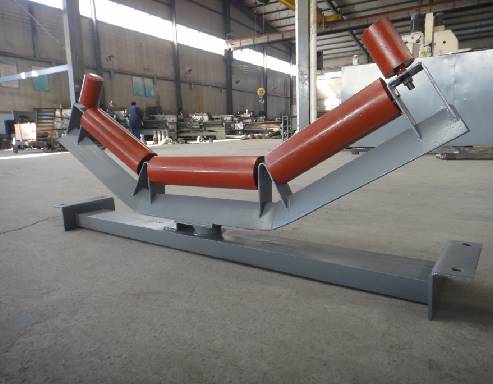 Afrikaans
Afrikaans  Albanian
Albanian  Amharic
Amharic  Arabic
Arabic  Armenian
Armenian  Azerbaijani
Azerbaijani  Basque
Basque  Belarusian
Belarusian  Bengali
Bengali  Bosnian
Bosnian  Bulgarian
Bulgarian  Catalan
Catalan  Cebuano
Cebuano  Corsican
Corsican  Croatian
Croatian  Czech
Czech  Danish
Danish  Dutch
Dutch  English
English  Esperanto
Esperanto  Estonian
Estonian  Finnish
Finnish  French
French  Frisian
Frisian  Galician
Galician  Georgian
Georgian  German
German  Greek
Greek  Gujarati
Gujarati  Haitian Creole
Haitian Creole  hausa
hausa  hawaiian
hawaiian  Hebrew
Hebrew  Hindi
Hindi  Miao
Miao  Hungarian
Hungarian  Icelandic
Icelandic  igbo
igbo  Indonesian
Indonesian  irish
irish  Italian
Italian  Japanese
Japanese  Javanese
Javanese  Kannada
Kannada  kazakh
kazakh  Khmer
Khmer  Rwandese
Rwandese  Korean
Korean  Kurdish
Kurdish  Kyrgyz
Kyrgyz  Lao
Lao  Latin
Latin  Latvian
Latvian  Lithuanian
Lithuanian  Luxembourgish
Luxembourgish  Macedonian
Macedonian  Malgashi
Malgashi  Malay
Malay  Malayalam
Malayalam  Maltese
Maltese  Maori
Maori  Marathi
Marathi  Mongolian
Mongolian  Myanmar
Myanmar  Nepali
Nepali  Norwegian
Norwegian  Norwegian
Norwegian  Occitan
Occitan  Pashto
Pashto  Persian
Persian  Polish
Polish  Portuguese
Portuguese  Punjabi
Punjabi  Romanian
Romanian  Russian
Russian  Samoan
Samoan  Scottish Gaelic
Scottish Gaelic  Serbian
Serbian  Sesotho
Sesotho  Shona
Shona  Sindhi
Sindhi  Sinhala
Sinhala  Slovak
Slovak  Slovenian
Slovenian  Somali
Somali  Spanish
Spanish  Sundanese
Sundanese  Swahili
Swahili  Swedish
Swedish  Tagalog
Tagalog  Tajik
Tajik  Tamil
Tamil  Tatar
Tatar  Telugu
Telugu  Thai
Thai  Turkish
Turkish  Turkmen
Turkmen  Ukrainian
Ukrainian  Urdu
Urdu  Uighur
Uighur  Uzbek
Uzbek  Vietnamese
Vietnamese  Welsh
Welsh  Bantu
Bantu  Yiddish
Yiddish  Yoruba
Yoruba  Zulu
Zulu Optimal Solutions for Belt Guide Rollers in Conveyor Systems
Understanding Belt Guide Rollers Key Components in Conveyor Systems
Belt guide rollers are integral components in various conveyor systems, primarily serving to maintain the alignment and stability of conveyor belts. As industries increasingly rely on efficient material handling solutions, understanding the functionality, types, and benefits of these rollers becomes essential. This article explores the critical aspects of belt guide rollers and their role in enhancing operational efficiency.
What are Belt Guide Rollers?
Belt guide rollers are cylindrical components designed to support and guide conveyor belts as they move. Positioned along the conveyor's path, these rollers play a crucial role in ensuring that the belt remains aligned and operates smoothly. When a conveyor belt deviates from its intended path, it can cause significant operational challenges, including increased wear on the belt and machinery, reduced efficiency, and potential system failures.
Types of Belt Guide Rollers
There are several types of belt guide rollers, each tailored to specific applications and operational needs
1. Standard Guide Rollers These are the most common type and are typically used in flat belt applications. They are designed to keep the belt aligned and are available in various sizes and materials to accommodate different load requirements.
2. Self-Adjusting Rollers These rollers automatically adjust to the width of the conveyor belt, providing a versatile solution for systems that handle various materials or require flexibility in operations. They reduce the need for manual adjustments and maintenance.
3. Idler Rollers Often employed alongside guide rollers, idler rollers support the weight of the belt and the materials it carries. By reducing the friction and drag on the system, idler rollers contribute to improved energy efficiency.
4. V-Shape Rollers Designed for applications that require a more controlled guiding mechanism, V-shape rollers ensure that the belt remains in the center of the conveyor system. These are particularly useful in environments with high levels of vibration or dynamic movement.
belt guide rollers

Benefits of Using Belt Guide Rollers
The incorporation of belt guide rollers into conveyor systems offers several advantages
1. Enhanced Alignment and Stability The primary benefit of these rollers is to maintain the alignment of the conveyor belt. By preventing deviations, they reduce the risk of material spillage and damage to both the belt and the machinery.
2. Extended Equipment Lifespan By minimizing misalignment and reducing wear on the belt and associated components, belt guide rollers can significantly extend the lifespan of the equipment. This translates into lower maintenance costs and reduced downtime.
3. Improved Efficiency When conveyor belts operate smoothly without deviations, material transport becomes more efficient. This leads to higher productivity levels and improved overall system performance.
4. Versatility As mentioned earlier, different types of belt guide rollers can be used in various applications, making them suitable for a wide range of industries, including manufacturing, agriculture, logistics, and mining.
Maintenance Considerations
To ensure the optimal performance of belt guide rollers, routine maintenance is essential. Regular inspections should focus on identifying signs of wear or misalignment, ensuring that the rollers are clean and free from debris. Additionally, lubrication may be necessary to prevent excessive friction, particularly in high-speed applications. Timely maintenance can prevent minor issues from escalating into significant operational disruptions.
Conclusion
Belt guide rollers are small yet critical components in the world of conveyor systems. Their ability to maintain belt alignment and enhance operational efficiency cannot be overstated. As industries continue to evolve and demand more from their material handling systems, the importance of understanding and maintaining belt guide rollers will only grow. By investing in quality rollers and adhering to maintenance best practices, businesses can ensure their conveyor systems operate at peak efficiency, ultimately leading to increased productivity and reduced costs.
-
Revolutionizing Conveyor Reliability with Advanced Rubber Lagging PulleysNewsJul.22,2025
-
Powering Precision and Durability with Expert Manufacturers of Conveyor ComponentsNewsJul.22,2025
-
Optimizing Conveyor Systems with Advanced Conveyor AccessoriesNewsJul.22,2025
-
Maximize Conveyor Efficiency with Quality Conveyor Idler PulleysNewsJul.22,2025
-
Future-Proof Your Conveyor System with High-Performance Polyurethane RollerNewsJul.22,2025
-
Driving Efficiency Forward with Quality Idlers and RollersNewsJul.22,2025





























